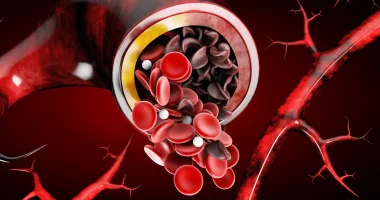Brucellosis is an infectious disorder that makes people feel like they have the flu, with symptoms such as fever, weakness, and muscle pain. This disease can affect from animals to humans.
The infection is caused by a bacteria called Brucella.
People can catch brucellosis in a few ways:
- By touching or being around animals that have the infection
- By eating meat that hasn’t been cooked properly
- By drinking milk or eating dairy products that haven’t been pasteurized (a process that kills bacteria by heating the milk).
Brucellosis isn’t very common in the United States. However, if someone gets it and doesn’t get treated, it can lead to serious health problems.
Causes of Brucellosis
Various species of animals host various kinds of Brucella bacteria, but not all of these bacteria can infect humans. Additionally, some types of Brucella bacteria are rare in the United States.
Here is a breakdown of the different types of Brucella bacteria, the animals they infect, and the risk of infection in the U.S.:
- Brucella melitensis: This bacterium is found in sheep and goats but is not currently identified.
- Brucella suis: This type is found in swine, particularly wild hogs.
- Brucella abortus: This bacterium is present in some wild elk, cows, and bison.
- Brucella canis: Found in dogs, this type is infrequent.
- Brucella pinnipediae and Brucella ceti: These bacteria infect marine mammals and uncommonly infect individuals.
Transmission
This Brucella bacteria can go into the body through the mouth, eyes, or lesions in the skin, leading to infection through various routes:
People can get infected by consuming uncooked or undercooked meat from animals carrying the bacteria.
Unpasteurized dairy products, such as raw milk from goats, cows, or sheep, can also spread Brucella bacteria to humans.
Direct contact with transmitted animals or their bodily fluids can spread the bacteria, either by breathing it in or through skin contact.
While rare, Brucella can also spread between humans through:
- Tissue transplants
- Blood transfusions
- Breastfeeding
- Sexual contact
Symptoms
Brucellosis can manifest with symptoms that develop gradually over days, weeks, or even months, depending on which tissues and organs are affected. The progression of the infection can vary:
Acute, subacute, and chronic infections
Around half of those infected experience acute brucellosis, with symptoms appearing within 1 to 2 days.
Subacute brucellosis presents with symptoms that take several weeks to manifest.
Chronic brucellosis involves symptoms lasting more than a year, often with recurring fever episodes.
Initially, brucellosis symptoms resemble those of the flu, including fever, extreme sweating, muscle weakness, joint pain, headache, cough, fatigue, appetite loss, constipation, and occasional swollen lymph nodes, spleen, or liver enlargement.
Localized vs. Widespread
The infection can be localized to one area or widespread throughout the body, influencing the severity and type of symptoms experienced. For instance:
- Localized brucellosis primarily affects specific areas, such as causing lower back pain and reduced mobility due to bone inflammation at the base of the spine.
- Involvement of the liver can lead to abscess formation, resulting in jaundice—a yellowing of the skin and eyes.
- Infections affecting the gastrointestinal tract may cause symptoms like nausea, diarrhea, vomiting, lower stomach pain, and loss of weight.
- Inflammation of the urinary tract can lead to kidney inflammation and severe pain beneath the ribcage, while men may experience painful testicular and prostate inflammation.
- In rare cases, brucellosis can affect the central nervous system, causing inflammation of the brain, spinal cord, or membranes around them, potentially leading to complications such as stroke.
- Heart inflammation (endocarditis) and skin lesions (raised bumps, ulcers, rashes) are also rare manifestations of brucellosis.
Diagnosis
When someone shows signs of brucellosis, the healthcare provider will first check their medical history and signs and do a physical exam.
Next, they might do a blood test known as a serum agglutination exam. This test checks for antibodies that the body produces to fight Brucella bacteria. High levels of these antibodies can indicate an infection.
In certain situations, the healthcare provider may also need to take a small sample of bone marrow to test for the bacteria.
Treatment
Treatment for brucellosis usually involves taking two antibiotics together: rifampin and doxycycline. These medications are typically prescribed by a doctor and the treatment course lasts for about 6 to 8 weeks.
In some cases, different combinations of antibiotics may be used, like trimethoprim with sulfamethoxazole and doxycycline with streptomycin.
Rest is also important during treatment to help the body recover.
After completing treatment, fewer than 10 out of 100 people may experience a recurrence of brucellosis symptoms. Regular follow-up with a healthcare provider is important to monitor recovery and manage any recurring symptoms.
Complications
Brucellosis can lead to various complications that affect different parts of the body:
- Endocarditis: This is inflammation of the inner lining of the heart, which can occur in rare cases of brucellosis.
- Kidney and liver damage: The infection can cause damage to these organs, affecting their function.
- Blood clotting problems and blood poisoning: Brucellosis may disrupt normal blood clotting mechanisms and, in severe cases, lead to blood poisoning.
- Encephalitis and stroke: Inflammation of the brain (encephalitis) can occur, and in some cases, this inflammation may lead to a stroke.
These complications highlight the importance of early diagnosis and treatment of brucellosis to prevent serious health issues. Regular medical follow-up is crucial for managing and monitoring any potential complications.
When to consult a doctor
If you experience flu-like symptoms after coming into exposure to wild animals, traveling to foreign countries, drinking or consuming unpasteurized dairy or unpasteurized milk, or eating uncooked meat, it’s important to see a doctor promptly.
Additionally, anyone showing signs of complications related to brucellosis should seek medical attention without delay. Symptoms of complications can include severe or persistent symptoms such as heart problems, kidney issues, liver problems, or neurological symptoms like headaches and confusion.
Prompt medical care is essential for diagnosing brucellosis early and managing any potential complications effectively.
Summary
Brucellosis is an infectious disease spread from animals to humans through contact with infected animals, consuming raw dairy or undercooked meat. Symptoms range from flu-like signs to severe complications affecting organs like the heart, kidneys, and brain.
Diagnosis involves medical history, physical exams, and tests like blood work or bone marrow sampling. Treatment typically includes antibiotics like doxycycline and rifampin for 6-8 weeks, with rest aiding recovery. Recurrence of symptoms post-treatment is uncommon. Prompt medical attention is crucial for managing complications and ensuring full recovery.









